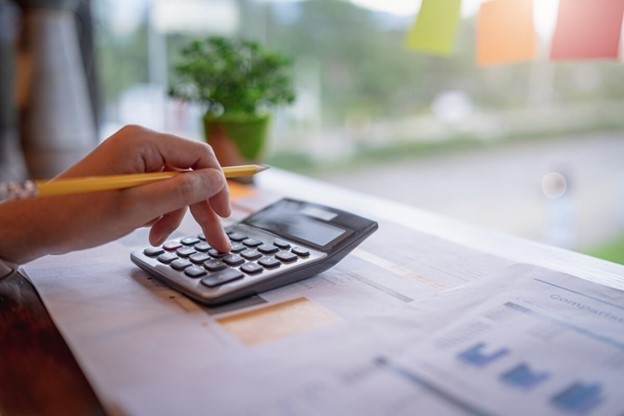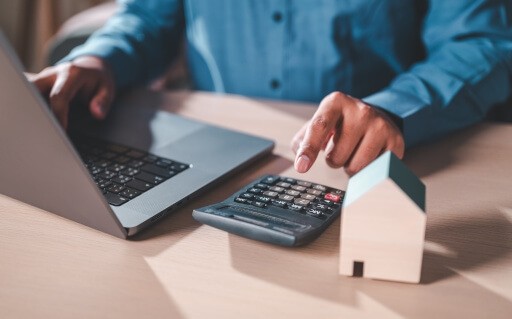It’s the driving factor behind becoming a landlord in the first place. It’s also the one topic that’s often overlooked: how to collect rent from tenants. Establishing the “how” is almost as important as the “how much,” and your collection policy should be something you agree upon with your tenant before they sign the lease. Will you collect in person? Through an online rent collection service? By a check in the mail? Determining the best way to collect rent from tenants will help you get paid on time and remove any potential confusion, so here are seven ways to collect rent.
1. Set up online payments.
Of the seven, this is by far the best way to collect rent. Paying rent online makes things easy, convenient, and if you are renting to younger tenants (especially Gen Z), they will likely expect to pay rent this way. You can set up automatic rent payments through Apartments.com’s Rental Manager, which will also keep your payments organized and let you know which tenants are current and which are not. Features include automated email reminders with late fees included when the rent is past due. Your tenants will have the option to pay for free with their checking accounts or for a small fee with a debit or credit card, so you’ll always get paid on time. Our expense tracking platform helps you summarize rental expenses by property and tax category. From there, you can easily export them to CSV or PDF formats to make doing your taxes a breeze. Unlike our competitors, there’s no need to go off-site to a third party for required forms. With Apartments.com, you can download the required tax filing forms directly from your account, and they are backed up for seven years.
2. Collect in person
There are some benefits to collecting rent in person. You get a chance to see your property every month to make sure all is well. It’s much more difficult for your tenants to forget to pay the rent on time. It’s a great opportunity to talk to the tenant about any issues they might be experiencing, and you can do any routine maintenance (smoke detectors, air filters) while you’re there.
But there are drawbacks. If you have several rental properties, this could get cumbersome. Imagine driving around all day from one location to the other, trying to collect rent. It could be frustrating if your tenant isn’t home when you come to collect, leading to friction.
If you decide to collect in person, go collect the rent from your tenant. Don’t allow the tenant to come to your home to deliver rent. As a general rule, don’t give your home address to tenants. While you may be on friendly terms now, imagine if you have to send a notice for late payments or an eviction notice. You don’t want an irate tenant turning up on your doorstep. Being a landlord is a business, so treat it like one. You wouldn’t expect any other business owner to offer their home address to customers, and your tenants shouldn’t expect that information, either.
3. Set up a drop box
If you own a multi-family home and have several tenants, a drop box located on the property (such as in a common area) may be a convenient option. Be sure to secure it and perhaps monitor the area with a security camera to discourage theft.
4. Accept payments through an ACH debit
If the tenant agrees, setting up an ACH debit will take only a few minutes, and they can even set up automatic payments so they don’t have to worry about paying rent every month. However, this method may not be cost-effective for you. There are fees involved, and, depending on your bank, you may have to set this up as a merchant.
5. Accept payments through an online payment app
There are several online payment apps like Venmo, PayPal, and Zelle. This is a convenient method for tenants as most may already have one of these payment services set up. However, depending on the service, there will likely be fees involved – especially if they require you to set up as a merchant. Some of these apps were designed for sharing money with friends and family and therefore may not offer buyer/seller protection.
6. The old-fashioned standard, checks by mail
If you would rather not give your tenants your home address, set up a post office box and ask your tenants to mail checks to that address. This is the slowest method for collecting rent, and you aren’t guaranteed to get the rent on time (“the check is in the mail” is a common saying for a reason). If you are renting to a young person, you should also be aware that very few in Gen Z know how to write out a check or address an envelope, so that could be an issue.
Also, if the envelope is postmarked on the due date but you don’t get it for several days, it was still technically paid on time. This method provides a certain level of uncertainty, so if you want the rent in your hands on the same date every month, collecting rent by mail may not be the most convenient method.
7. Collect through a property manager
A property manager is a person who manages your property for you. They collect rent, deal with issues, screen applicants, schedule maintenance, manage leases, and they even handle evictions if necessary. This is terrific – but it comes with a cost. You have to determine if the benefits of hiring a property manager outweigh the expense.
While there are several ways to collect rent payments, there’s one thing you probably shouldn’t do, and that’s to collect cash. There’s no way to truly document a cash payment, and this could lead to issues if a payment is ever in dispute.
Before setting up any policy, it’s a good idea to check your state and local laws to make sure you are aware of any regulations around rent collection.











